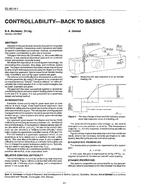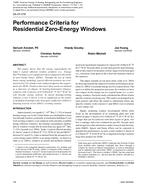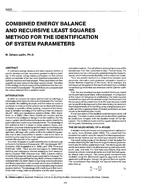Diesel engine-generator sets are widely used for providing normal and emergency power supply in many applications. These release heat tq the surroundings by the process of convection and radiation. This heat has to be removed by an appropriate ventilation system so that air temperature does not exceed the upper limit for safe operation. To design such a ventilation system requires the knowledge of heat released by the engine and generator to the engine room. Estimation of this heat load is the subject of this paper.
Once a particular engine generator set has been selected, information regarding heat added to the engine room is generally obtainable from the manufacturer. However, in many long-term projects, ventilation systems have to be designed long before the final selection can be made. A notable example is found in nuclear power plant projects in which the time lag between preliminary system design and final equipment selection through competitive bidding may be as much as five years. At this stage, the ventilation system designer often seeks guidance from standard handbooks. An extensive search through such reference materials revealed that only the handbooks published by ASHRAE and DEMA(Diesel Engine Manufacturers’ Association) provide any guidance. However, there is considerable variation between various recommendations.
In view of the foregoing, the author carried out a comparison between the heat load information published in catalogues of various manufacturers and the information provided by various handbooks. The results of that study are presented in this paper. The process of heat transfer involved and the parameters determining heat emission from engine surface are discussed. The limitations of manufacturers’ data as well as the recommendations of handbooks are discussed in view of the difficulties in measurements and the complexities of the problem. The conclusion is reached that a simple generally applicable correlation between engine work output and heat release to surroundings is unlikely. Surprisingly however, it was’ found that for 4-stroke engines upto 1000 kw output, manufacturers’ data for heat’emission can be correlated in terms of engine output alone. In engine manufacturers’ catalogues as well as in many books dealing with engines, the total heat given out by the engine(and/or generator) is called “radiation.” Actually, heat transfer occurs both by radiation and convection. To avoid any confusion, the use of this term has been avoided and the total heat outflow from engine surface has been called heat emission from engine. It is further stressed that all discussions here deal exclusively with water-cooled diesel engines driving air-cooled generators unless specifically noted otherwise.
Citation: ASHRAE Transactions, Volume 83, Part 2, Halifax, NS
Product Details
- Published:
- 1977
- Number of Pages:
- 9
- File Size:
- 1 file , 610 KB
- Product Code(s):
- D-HA-2453


